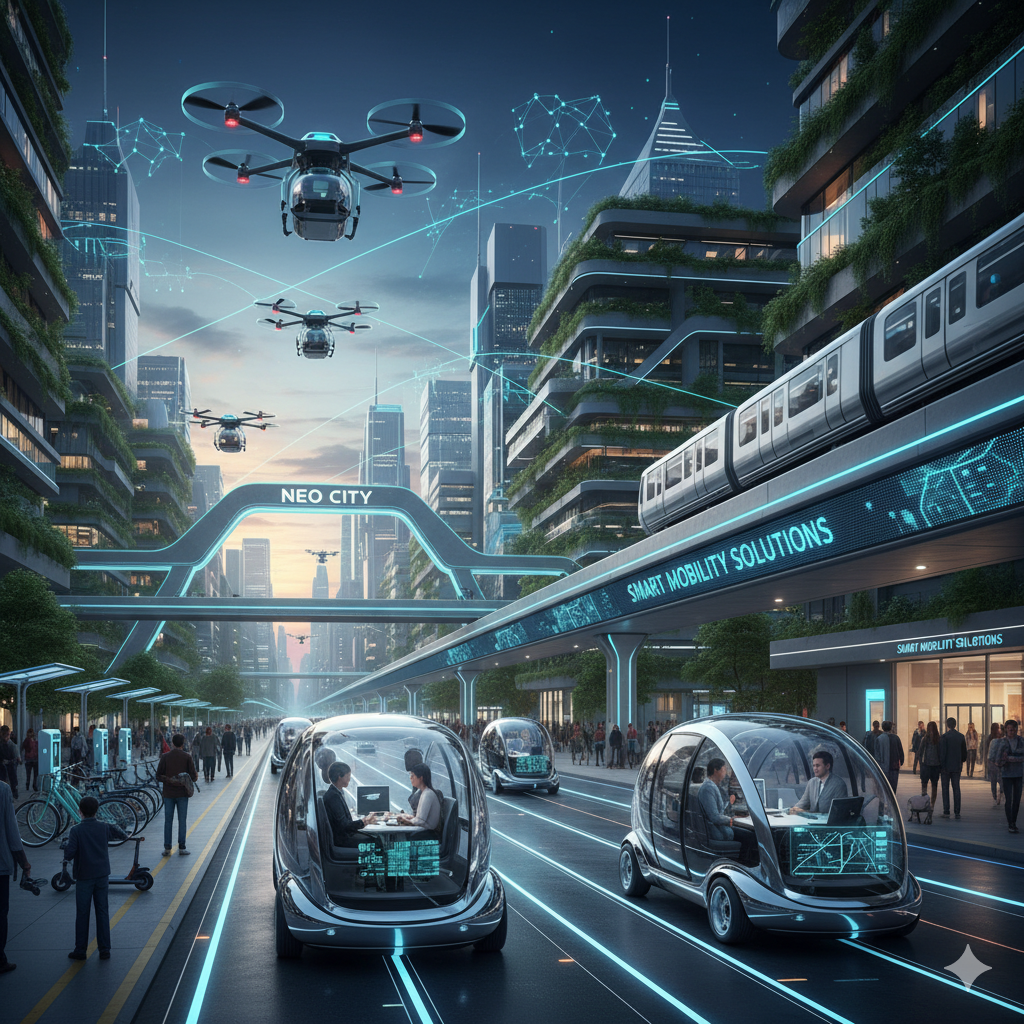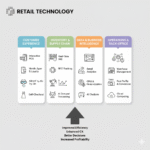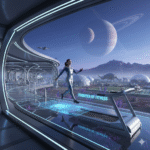We have all felt it: the creeping dread of rush hour, the brake lights stretching to the horizon, the wasted hours and fuel. For decades, our transportation infrastructure has been defined by a 20th-century model struggling to cope with a 21st-century reality. The resulting gridlock, pollution, and economic drain are no longer just an inconvenience; they are a critical urban crisis.
The solution, it turns out, is not simply to build more roads. The future of transportation lies in a smarter, more connected, and user-centric approach. This revolution is being built on two powerful pillars: Intelligent Traffic Management (ITM), which redesigns the “brain” of our city streets, and Smart Mobility Solutions, which redefine how we, the users, access and think about travel.
This article explores this transformative shift, diving into the technologies that make it possible, the solutions it offers, and the critical challenges we must navigate on the road ahead.
The High Cost of the 20th-Century Commute
Before we build the future, it’s essential to understand the failures of the present. Our current transportation systems are, for the most part, “dumb.” Traffic lights run on simple timers, public transit schedules are static, and our road networks are reactive, not predictive.
This inefficiency has staggering costs:
- Economic: The Center for Economics and Business Research has estimated that traffic congestion costs economies billions of dollars annually in lost productivity, wasted fuel, and shipping delays.
- Environmental: Idling in traffic is a massive source of CO2 emissions and particulate matter, contributing directly to climate change and public health crises in urban centers.
- Social: The time lost in traffic is time not spent with family, working, or resting. It’s a direct drain on our quality of life and a significant source of daily stress.
Simply put, the old model is broken. We can’t pour more concrete to solve a data problem. We need to upgrade the system’s intelligence.
Pillar 1: Intelligent Traffic Management (The “Smart” Streets)
Intelligent Traffic Management (ITM) is the first half of the solution. It’s the large-scale, top-down upgrade to our city’s infrastructure, turning our passive roads into an active, interconnected “digital nervous system.” The goal is to manage traffic flow dynamically, predictively, and efficiently.
The Digital Nervous System: Key Technologies
This new system is built on a foundation of cutting-edge tech:
- IoT & Advanced Sensors: The “eyes and ears” of the city. These are not just the old magnetic loops under the asphalt. We’re talking about high-definition cameras, LiDAR (Light Detection and Ranging) scanners, radar, and acoustic sensors that monitor traffic volume, vehicle speed, pedestrian presence, and even weather conditions in real-time.
- AI & Big Data: This is the “brain.” All the data from those IoT sensors is fed into powerful AI platforms. Machine learning algorithms analyze patterns, identify developing bottlenecks hours in advance, and run simulations to find the most efficient solution. Instead of one traffic engineer trying to manage a city, an AI can optimize thousands of intersections simultaneously.
- V2X (Vehicle-to-Everything) Communication: This is the “voice” of the network, creating a “social network” for cars and infrastructure. V2X allows:
- V2V (Vehicle-to-Vehicle): Cars “talk” to each other, sharing speed and position. If a car up ahead brakes suddenly, it can warn the cars behind it instantly, even before the driver sees the brake lights.
- V2I (Vehicle-to-Infrastructure): A car can “talk” to a traffic light. The light can tell the car, “I will be red for 30 seconds.” Your car can then adjust its speed to “glide” to the intersection just as it turns green, saving fuel and reducing stops.
- V2P (Vehicle-to-Pedestrian): A cyclist’s smartphone or a pedestrian’s wearable can broadcast their presence, making them “visible” to cars and preventing accidents.
ITM in Action
When these technologies work together, the results are transformative:
- Adaptive Traffic Signals: This is the most visible benefit. Instead of fixed timers, AI-powered systems like Google’s Project Green Light optimize signal timing based on actual, real-time traffic flow. This has been shown to reduce intersection delays and emissions significantly.
- Real-Time Driver Alerts: By analyzing data, the system can send alerts directly to drivers (via in-car systems or map apps) warning them of a “phantom” traffic jam forming, ice on a bridge, or an accident just around the bend.
- Dynamic Congestion Pricing: ITM allows for highly dynamic tolling. Prices on a highway could change in real-time based on congestion, encouraging more drivers to travel during off-peak hours or choose public transit.
Pillar 2: Smart Mobility Solutions (The “User” Focus)
If ITM is the top-down upgrade, Smart Mobility is the bottom-up revolution. It’s a suite of user-focused services that shift our entire transportation philosophy: from a model of private car ownership to one of shared, flexible, and on-demand access.
The All-in-One Commute: Mobility as a Service (MaaS)
The flagship concept of Smart Mobility is MaaS (Mobility as a Service). Think of it as the “Netflix for transportation.” The goal of MaaS is to provide a single, seamless platform—usually a smartphone app—that integrates every conceivable mode of travel.
With a true MaaS platform, a user can plan, book, and pay for an entire journey in one place. Your trip from the suburbs to downtown might look like this:
- You use the app to book a ride-share service from your home.
- It drops you at the local train station.
- After the train ride, you use the same app to unlock an e-scooter or bike-share for the “last mile” to your office.
The app handles all the ticketing and payments in the background. This convenience is key to solving the “first-and-last-mile” problem—the hurdle that often stops people from using public transit.
The Micro-Mobility and Shared Access Revolution
MaaS is powered by a diverse ecosystem of mobility options. This includes:
- Ride-Sharing & Car-Sharing: Services like Uber and Lyft, as well as peer-to-peer rentals, provide on-demand access to a car without the burden of ownership, insurance, or parking.
- Micro-Mobility: E-scooters and e-bikes have exploded in popularity for a reason. They are the perfect solution for short-distance trips that are too long to walk but too short to justify driving. They are low-emission, fun, and reduce the number of cars on the road.
Roadblocks and Reality Checks: The Challenges Ahead
This data-driven future is not inevitable. To make it a reality, we must navigate several significant challenges:
- Massive Infrastructure Cost: Upgrading every traffic light with AI, outfitting roads with sensors, and building a robust 5G network to handle V2X communication is incredibly expensive. Cities must navigate this through public-private partnerships and smart, phased-in investments.
- Data Privacy & Cybersecurity: This is perhaps the biggest hurdle. These systems work by collecting vast amounts of data—including your precise location at all times. Who owns this data? How is it used for advertising? And most frighteningly, what stops a hacker from taking control of a city’s traffic grid or creating a “phantom” accident to stop your car?
- The Digital Divide: A system that relies on a smartphone and a credit card risks leaving many people behind. We must ensure that next-generation transportation is equitable and accessible to all, including the elderly, the unbanked, and those living in underserved communities.
- Regulation and Standardization: The technology is moving much faster than the law. We need clear, international standards for V2X communication, data privacy, and accident liability (e.im., if an AI-managed intersection causes a crash, who is at fault?).
The Destination: A Smarter, Greener City
The transition to next-generation transportation is one of the most significant urban projects of our time. Intelligent Traffic Management and Smart Mobility Solutions are not separate trends; they are two halves of a single, integrated vision. The “smart” streets of ITM create the efficient, reliable foundation that makes the user-focused services of Smart Mobility attractive.
The goal is not just to get from Point A to Point B a few minutes faster. It’s to fundamentally reshape our cities, making them cleaner, quieter, safer, and more equitable. The destination is not just a faster commute; it’s a more livable world.


